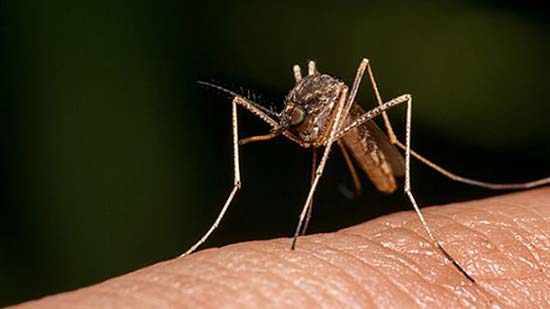Where is West Nile virus most common across the US this year?

Fall is here and there is an anticipation of cool weather and leaves changing. However, West Nile virus is sticking around for a little while longer. As long as the weather remains warm, mosquitoes can still transmit the disease.
West Nile is an arthropod-borne virus (arboviral) disease, a virus transmitted through birds and mosquitoes. Once an infected mosquito bites a human, the disease is transmitted and that person can become infected.
Areas experiencing increasingly warm, dry weather are seeing higher mosquito activity, and this climate is best for transmission disease to be successful.
The Centers for Disease Control and Prevention (CDC), as of Sept. 18, is reporting 1,077 cases of West Nile in the country and 35 deaths; 47 states and the District of Columbia are reporting cases of human infections.
Of the 1,077 cases, 608 of them are of the neuroinvasive West Nile, a more severe diagnosis of the disease that can result in death.
Symptoms of neuroinvasive West Nile disease include, but are not limited to, altered mental state, stiff neck, weak limbs, high fever and tremors. A neuroinvasive diagnosis of West Nile can lead to a more severe conditions such as encephalitis and meningitis.
Four hundred and sixty-nine cases reported were non-neuroinvasive, otherwise referred to as "West Nile Fever." These symptoms are minor and most people do not realize they have a non-neuroinvasive illness. Those who do experience the symptoms, however, typically report vomiting, rashes, aches, headache, fatigue and weakness.
Although West Nile cases are popping up everywhere, some states, such as South Dakota, are experiencing the worst of it.
“July and August are typically our warmest months,”said Dr. Joshua Clayton, an epidemiologist for the State of South Dakota.
“This is one of the reasons why we typically see the mosquito activity pick up.”
Clayton says that South Dakota, along with North Dakota and Nebraska, has the greatest number of neuroinvasive West Nile virus cases.

“What we have identified is that after the initial two to three years of West Nile virus it was all across the state,”said Clayton.
“What we have seen after that, it has seemed to have settled more in the James River Valley [in eastern South Dakota]. That area seems to have the highest risk.”
South Dakota has had 107 cases of West Nile disease reported so far this year, according to the CDC. Of these cases, two have been deadly.
The state has relied on the help of the NASA Applied Sciences program and South Dakota State University in collecting and identifying data on mosquito activity and the spread of West Nile.
“The one thing that we have been able to do, around the collaborating with SDSU and the NASA Applied Sciences program, is we have been able to use data on temperature and humidity along with our mosquito surveillance data to identify how severe of a year we anticipate the West Nile season to be,”said Clayton.
As of Sept. 21, 100 cases have been reported in 25 counties in the state of California, according to the California Department of Public Health’s (CDPH) West Nile virus website. The state also reports that the disease has also been found in horses and sentinel chickens, who are specifically placed in an area to test for diseases like West Nile.
According to the CDPH, Southern California and the Central Valley region are typically where the most West Nile cases are reported but, fortunately, they have recorded less activity this season. Hot, dry weather in these regions of California tends to be the right climate for mosquito activity.
Sacramento and the surrounding areas, however, are reporting an unusual increase of West Nile cases this season.
Kramer said that efforts by the CDPH and local agencies have helped get California as ahead of the virus as possible. The comprehensive West Nile program they have established allows for an interagency initiative to detect and track the virus in dead birds and mosquitoes in the state.
For South Dakota, California and the rest of the country, staying ahead of West Nile remains a challenge that will carry on into the unforeseeable future.
“West Nile virus is here to stay,”said Kramer.
“It's endemic.”

